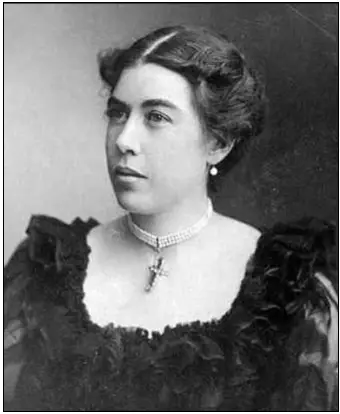The Unsinkable Molly Brown: Fact or Fiction?
The mythical “Unsinkable Molly Brown” was actually…a real person. She was known as Margaret (or Maggie) Brown.
Margaret was born in July 1867 in Hannibal, Missouri, to John and Johanna Tobin. In the mid-1880’s, two of her siblings moved to Leadville, Colorado. (Nowadays, Leadville is about a 2 hour drive up into the mountains behind Denver.) At that time, Leadville was a booming mining town. In 1886, when Margaret was 18, she followed her siblings “out west.”
Shortly after that, Margaret met James Joseph “J. J.” Brown, a mining superintendent in Leadville. They fell in love and were married in September 1886. The early days of their marriage were a struggle. While J.J. was promoted into management at the mining company, Maggie had two children: first a son, Lawrence, and later a daughter, Catherine.
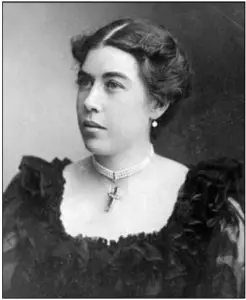
As a young mother, Maggie became active outside the home. She helped miners and their families and campaigned to improve Leadville’s schools.
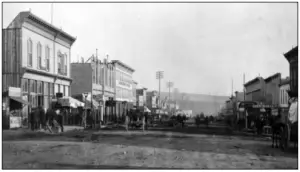

In 1893, gold was discovered at the Little Johnny Mine in the mountains above Denver (not far from present-day Boulder). Later, J.J. was granted a partnership in the Ibex Mining Company. The fortunes of the Brown’s changed. They became wealthy and moved into Denver. In 1894, Maggie helped found the Denver Women’s Club. She continued to help miners and their families.
In 1901, in addition to her other outside activities, Maggie became politically active and decided to run for the Colorado State Senate. J.J. did not support Maggie in a lot of her “outside” activities. Maggie and J.J. separated in 1909.
Maggie and J.J. did not officially divorce. She still had access to great wealth. Maggie tried to learn more and grow by traveling abroad. Early in 1912, Maggie was visiting Europe. In April, she was in France and she received word that a grandson had become very ill. She booked passage home to America on the ship: RMS Titanic.
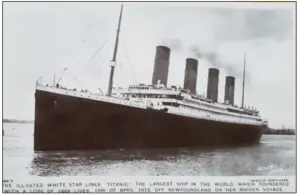
At 11:40 PM on April 14, 1912, the Titanic struck an iceberg in the North Atlantic approximately 400 miles (640 kilometers) off the coast of Newfoundland (Northeast Canada). Even though Maggie was a 1st Class passenger, she helped others board lifeboats before her. The Titanic sank at about 2:00 AM on the morning of April 15. About 30% of the passengers on board ship survived the sinking. After being rescued by the RMS Carpathia, Maggie and other 1st Class passengers formed a survivors’ committee. They worked to take care of other survivors that were passengers in 2nd and 3rd Class. Because Margaret was heroic in the face of danger and death, news stories were printed about her. This earned her the nickname “the Unsinkable Mrs. Brown.” Later in the 1960’s, a Broadway play and a popular film were made about her life. These were: “The Unsinkable Molly Brown.”
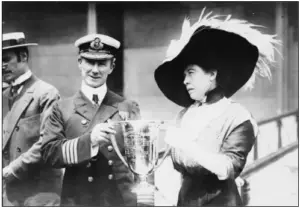
The engraving on the cup reads:
“Presented to Captain A. H. Rostron RD, RNR, Commander of the RMS Carpathia.
“In grateful recognition and appreciation of his heroic and efficient service in the rescue of the survivors of the Titanic on April 15th 1912, and of the generous and sympathetic treatment he accorded us on his ship. From the Survivors of the Titanic.”
Because of surviving the sinking of the Titanic, Maggie became famous. Again, she used her fame to campaign for causes that she believed in: improving bad living conditions for miners, women’s suffrage (i.e. the right to vote), along with literacy and education for children.
In 1914, Maggie was persuaded to become a candidate for the Colorado State Senate. She ended her candidacy early. She returned to France to help the American Committee for Devastated France because of the onset of World War I. She worked to rebuild areas behind the front line of the war. She also helped wounded French and American soldiers.
At the time of J.J. Brown’s death in September 1922, Maggie was asked about her relationship with her estranged husband. She was quoted in the newspapers, “I’ve never met a finer, bigger, more worthwhile man than J.J. Brown.” After J. J. died, Maggie did not receive huge amounts of money. It was modest. She lived modestly for the rest of her life.
In the last years of her life, Maggie worked as an actress. She died in her sleep on October 26, 1932, at the Barbizon Hotel in New York City. Later, it was found that she died from a brain tumor. She was buried along with her husband, J. J., in Westbury, New York. Her funeral was attended only by family members and there was no eulogy given.


